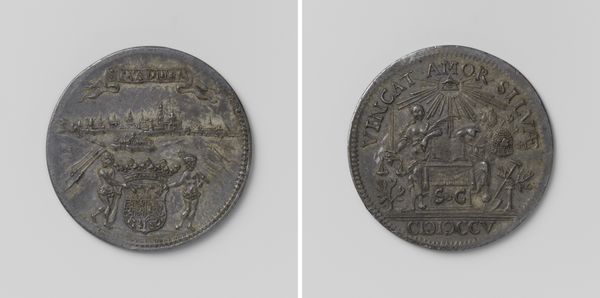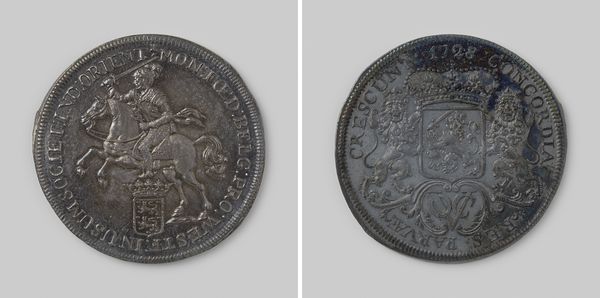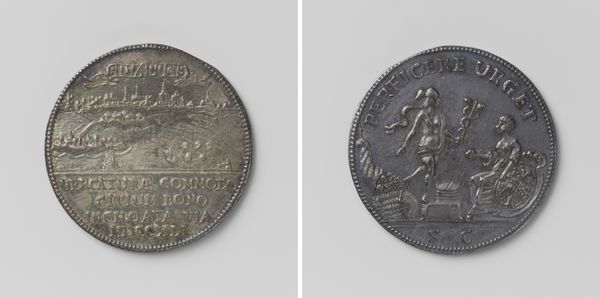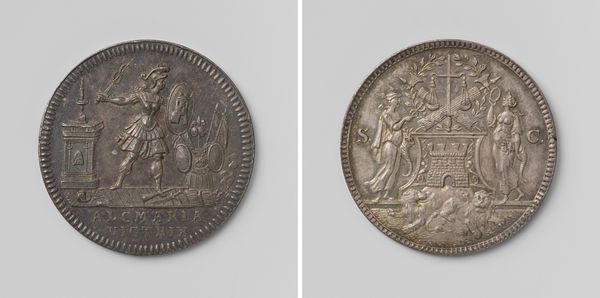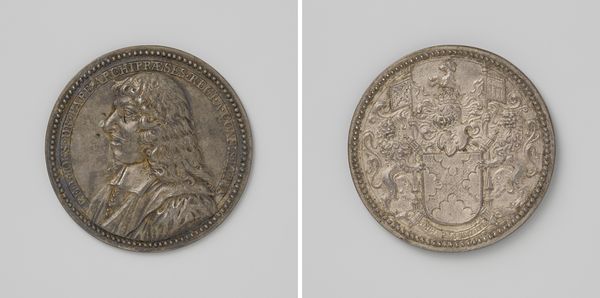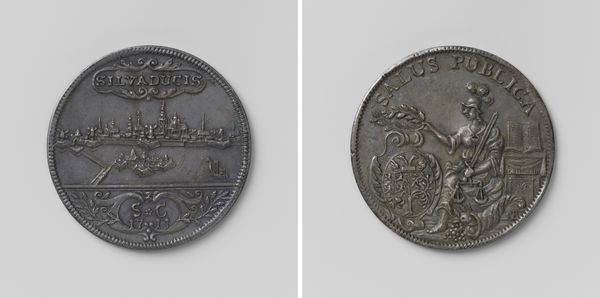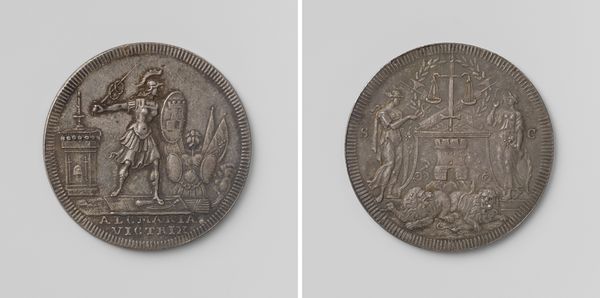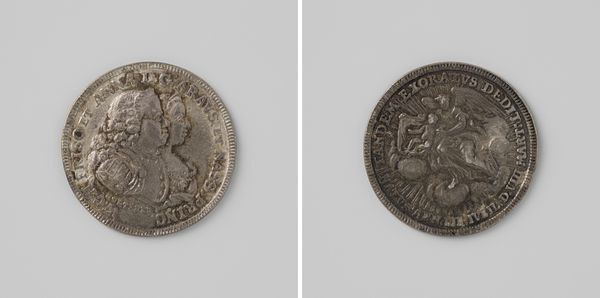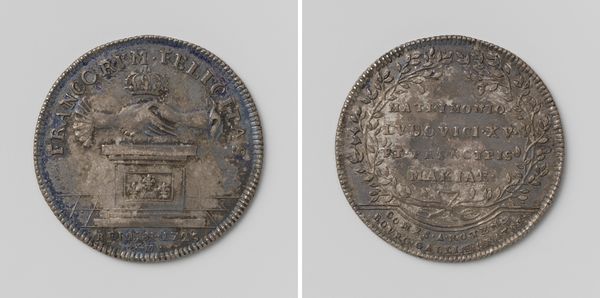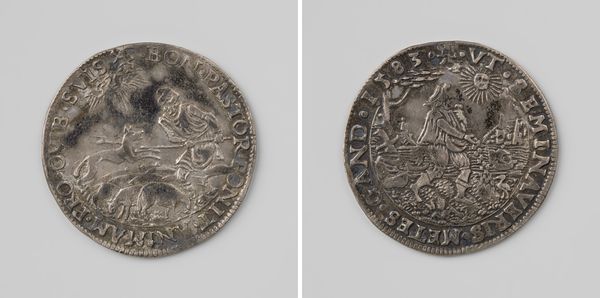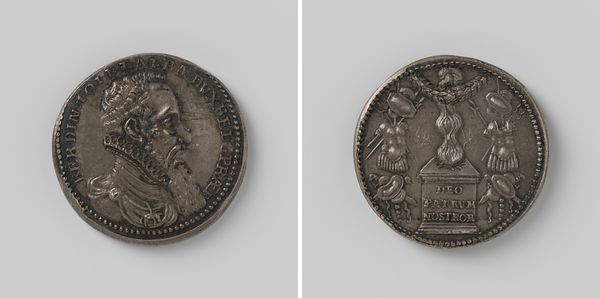
's-Hertogenbosch, vroedschapspenning op de vrede van Utrecht 1713
0:00
0:00
print, metal, relief
#
decorative element
#
allegory
#
baroque
# print
#
metal
#
relief
#
history-painting
Dimensions: diameter 2.7 cm, weight 6.65 gr
Copyright: Rijks Museum: Open Domain
Curator: Well, this is intriguing! This metalwork, titled "'s-Hertogenbosch, vroedschapspenning op de vrede van Utrecht," was created by Theodorus Casparus van Berckel in 1713, commemorating the Peace of Utrecht. What strikes you first about it? Editor: It has such a weighty stillness, like staring into a paused moment of a grand pageant. There's a cool formality in the grey metal and detailed figures... it gives a vibe of measured relief. Curator: Absolutely. The subject is inherently political, reflecting on the end of a major conflict. The peace of Utrecht involved multiple treaties that altered the balance of power in Europe, so medals such as this really underscored civic pride and the desire for prosperity. Editor: I’m really drawn to the allegorical figures clustered on both sides of the medallion. On one side, we see a seated female figure near the water’s edge holding a spear or staff... perhaps representing peace. Is that a city view depicted? Curator: Exactly, she is positioned to oversee the city of 's-Hertogenbosch which is accurately depicted along the skyline in a bird’s-eye perspective. Underneath it states 'S.P.Q.S.' signifying that this commission comes from the senate and the people. The reverse continues in this manner; note the inscription "Tempora Optata," which translates to "The Desired Times", referring to this newfound peace. The composition with the figure surrounded by putti makes for a busy scene but reflects the baroque style which was popular in the Dutch Republic at the time. Editor: I'm just now noticing the Roman numerals proclaiming the year of 1713 – so discreet, almost whispered into the metal! To me, knowing its intent, the work reflects a yearning. After enduring conflicts that ravaged the European continent for decades, there was an exhaustion mixed with optimism. And these desires made manifest as public declaration, as we see here! Curator: Precisely! These medals had great circulation, a method of propaganda almost. Now that you have pointed this out, this helps show the importance of art in those times and it allows the public of the time to create their own opinions on certain important, life changing matters. Editor: The fact that it's something meant to be held in your palm, like a promise... I wonder, could ordinary citizens grasp the full political implications or was its meaning primarily symbolic, almost talismanic? I find myself pondering the lived reality behind this "desired time," beyond the visual declarations.
Comments
No comments
Be the first to comment and join the conversation on the ultimate creative platform.

